Profile: Cary’s First Urban Forestry Manager
Cary, NC — Growing up in the small town of Browns Summit, NC, Katie Rose Levin’s life was quite literally rooted in nature. In fact, she says there were more trees around than people.
Playing in the woods with her pets and siblings and developing a love for trees became much more than a fond memory. It proved to be a catalyst for her education and career path.
Becoming Cary’s First
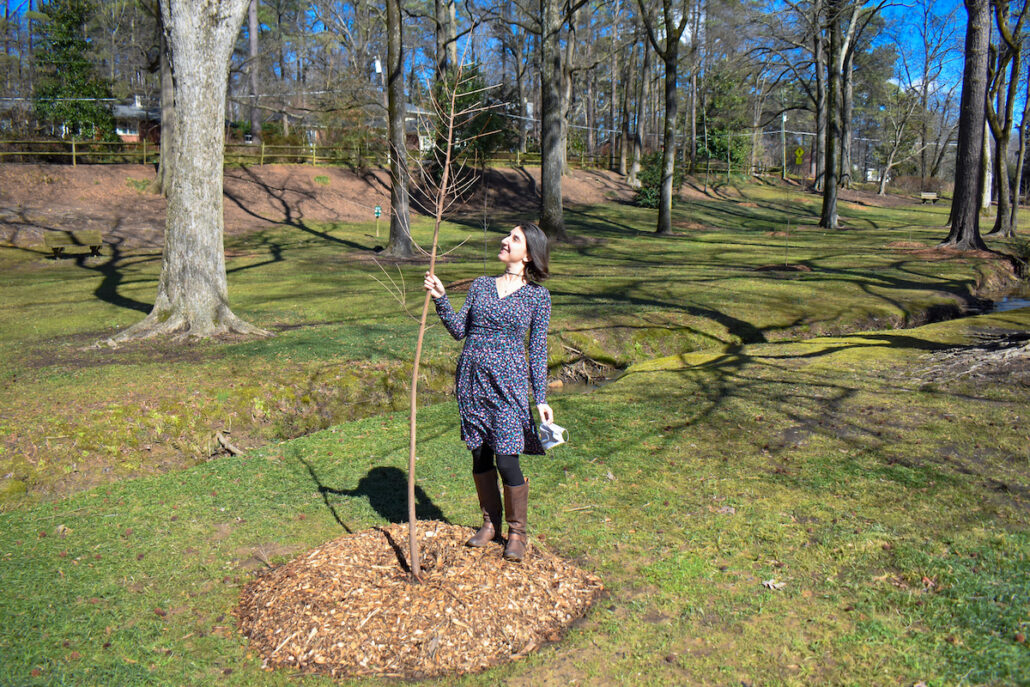
Levin earned two Master’s Degrees, one in Forestry and the other in Environmental Management before becoming Duke University’s first Natural Resources Manager.
Throughout her career, she has started up her own company, gotten environmental consulting experience, helped to create an environmental justice nonprofit called Trees Durham and traveled through South America to learn from other cultures on how they approached using the environment to bring about solutions for things like housing, food and medicine.
After 15 years of forestry and environmental management experience behind her, Levin has been named Cary’s first Urban Forestry Manager. She and her husband Don Addu, who also works in the environmental sector, now live in Durham with their funny and mischievous beagle named Melvin.
What’s an Urban Forestry Manager?
As Urban Forestry Manager, Levin’s job description encompasses quite a lot.
Using a data-driven approach, Levin is responsible for developing plans, policies and strategies to ensure the long-term flourishing of Cary’s urban canopy. A large-picture goal of her work is to foster a high quality of life in Cary by using Cary’s trees and natural resources as tools.
Levin said, “It’s also about making sure we are resilient in the face of climate change and other types of environmental pressures that we are going to face as a society in the future.”
For Cary specifically, an Urban Forestry Manager is important since the town is about 80% developed, more than most neighboring Triangle municipalities. This poses the challenge of thinking about what redevelopment will look like and how Cary can integrate trees in the process.
The Power of Trees
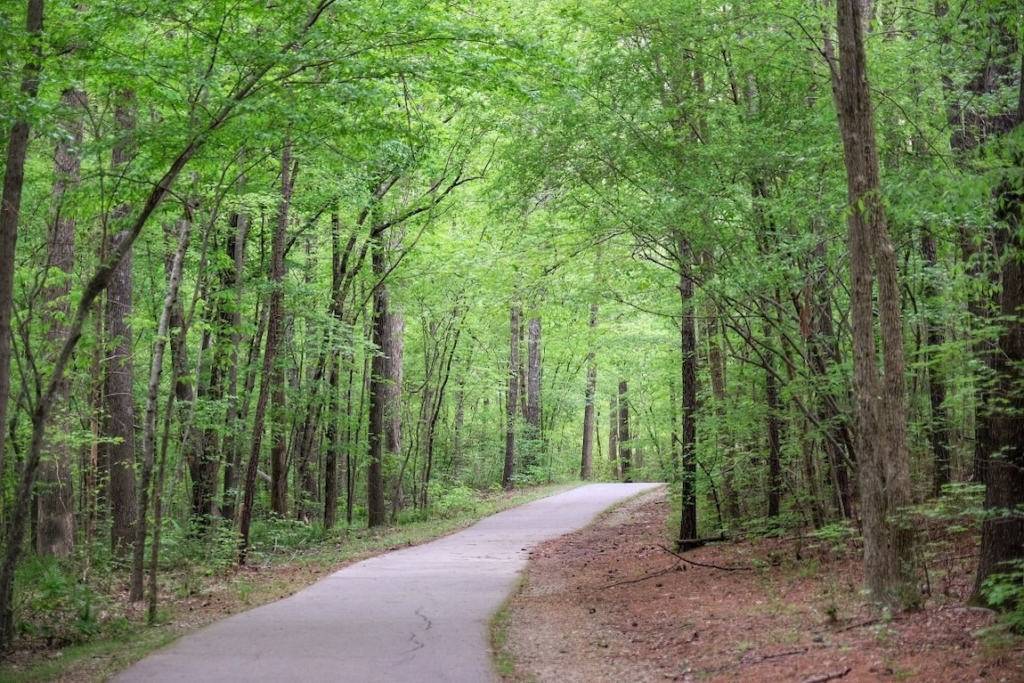
In combining technology and the environment, it’s remarkable to see the many ways trees can help many of the challenges that Cary faces. To see these solutions though, Levin looks at trees themselves as technology and as a tool.
“Trees are tools for our health and our prosperity,” said Levin. “They are giant air filters that pull pollution out of the air while cooling and cleaning it.
From a handful of studies and the works of Kathleen Wolf at the University of Washington, Levin shared the following on trees:
- Places with lots of trees create areas that are 10 degrees cooler. So if trees around a person’s home were properly planted, they could pay about half as much on air conditioning bills in the summer.
- People who are not around trees have higher instances of diabetes, stroke, asthma and heart attacks
- If you have trees that are well maintained in your neighborhood, your house is worth about 20% more on average
- If you have well-managed trees in your parking lots and shopping centers, people will pay more for what you’re selling and return more often
- On average, people who do not live around trees miss 4 more days of work or school per year because of the health impacts
Being a very data-based decision maker, Levin said, “It’s really about coming up with how we can use these studies and facts to promote specific types of wellness in our community.”
As an example, Levin said when looking at where to have a tree-planting, she would look into schools because kids who go to schools that are surrounded by trees on the campus (or within about 600 feet) have more confidence, get higher test scores and experience less bullying, less ADHD, and less anxiety.
First Tasks & Future Goals for Cary Forestry
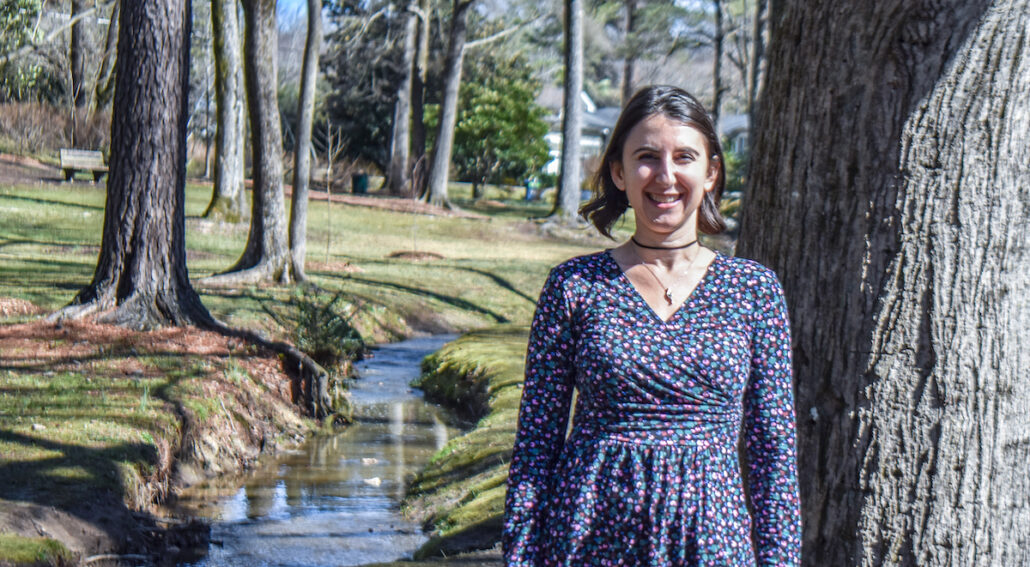
Starting her new role on January 4, 2021, Levin was impressed by the work that has already been such as designing an extensive greenway system and finding creative ways to work with developers on tree preservation and plantings.
“One thing that I’ve always liked about Cary is that they’ve always been looking forward to the next thing that can make Cary even more clean, safe and beautiful,” said Levin.
So far, Levin has put together four strategically placed tree plantings and started up a new initiative called My Tree, Our Tree that allows Cary residents to get a free native tree to plant in their own yards to help grow the canopy of Cary.
Looking ahead, Levin says it’s all about “creating a resilient, beautiful and safe community through trees, nature and technology.” Without giving any specific details, Levin also says there are some “spectacular and mind-blowing” initiatives in Cary’s future thanks to the special projects team and the Town Manager’s office that’s made trees and sustainable management a priority.
Keep Up-to-Date with Cary Forestry
Cary has a great population of citizens who are well-educated and active in environmental initiatives such as the Cary Tree Archive or the Sunrise Movement chapter. To see regular updates on forestry management and environmental efforts in Cary, here are a few resources:
Story and photos by Ashley Kairis.
All the Cary news for the informed Cary citizen. Subscribe by email.

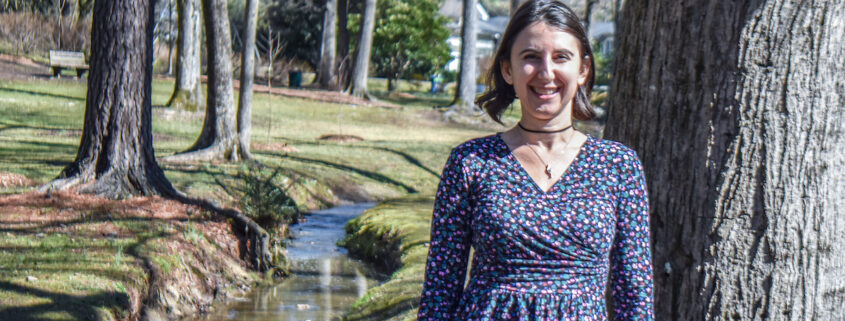
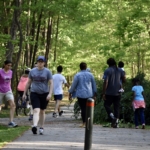

A huge welcome because we greatly need a professional in the role of arbor advocate. A large amount of disinformation is spewed about trees in Cary which is thinly veiled NIBYism against more dense family homes. I’m concerned that trees would be cited as preventing “diabetes, stroke, asthma and heart attacks.” Correlation is not causation. That is the kind of hyperbole we need to avoid. But I’m sure that is an innocent misstep which stems from enthusiasm! And enthusiasm for our natural resources is a great thing. Welcome, and I look forward to her contribution in this critical area.
We’ll leave for another time debate on the wisdom of purposely increasing the population of a Town whose population is now and has been for decades increasing exponentially, and in which that rate of exponential increase is itself currently increasing. I’ll speak only to the charge of hyperbole as an innocent misstep brought on by enthusiasm.
Harvard Medical School published the results of a five-year study that confirmed the results of previous studies and advanced the proposition that people living in tree-rich environments had, simply put, healthier hearts and more robust cardiovascular systems. – “Journal of the American Heart Association,” December 5, 2018.
Researchers studying the effects of rapid tree loss due to the emerald ash borer concluded that people living in those areas suffered higher rates of heart attacks and other cardiovascular diseases. The study also found that the rates of disease and death were directly proportional to the percentage of the tree cover that was killed. In other words, they proved causation, not just correlation. – “American Journal of Preventative Medicine,” Vol. 44, issue 2; February 1, 2013.
There are many more similar studies.
I’m ever leery of listing the benefits of trees, because that list of benefits is so long that it often exceeds the attention spans of listeners. Nevertheless, here is a partial list [with citations], which includes a section listing the medical benefits trees provide to humans: https://www.carytreearchive.org/benefitsZ.php
Anyway, Katie Rose is indeed a vivacious and enthusiastic women. But those attributes do not interfere with her job as an environmental scientist. When she speaks, wise men and women should listen. Intently.
As the population graph at https://datacommons.org/place/geoId/3710740 illustrates, Cary’s population has been growing linearly for decades, not exponentially.
Hi Brent! The graph you cite shows a 30-year period in Cary’s 150-year history. Nevertheless, it shows that Cary’s 1990 population of 40-some thousand doubled within the period, and then that doubled population (80-some thousand) itself AGAIN doubled, all within 30 years. The Town estimates Cary’s 2020 population at 170,287. The Census Bureau’s official count to be released in September will be significantly higher. To see the exponential growth graphically over the whole of Cary’s history, please see the image on this page: https://www.facebook.com/groups/711442796303514
Closed group, non-public post.
Cary’s population growth has been basically linear since the 1980 census numbers, through the 2019 estimate – almost exactly linear, outside of slow growth in the 1990 census. See the population data (taken from Cary’s wikipedia page) and this image, which includes the data and the pivotchart, plus my line through 1980-2019 showing the linear growth rate.
https://imgur.com/a/Z8zzTdd
@Mark Neill – I wonder what your point is – arguing that Cary’s skyrocketing population is not exponential, but cherry-picking certain years and asserting that that growth is linear? Is it solely for the purpose of intellectual discussion [what I consider, by the way, an excellent exercise in a Town with few or no forums for discussion of points important to our health, safety, and welfare] or is it for some other reason? Pray tell.
Here is an accessible link to the graph that shows the Town’s exponential population growth: https://www.carytreearchive.org/images/populationgraph.png
Even in the years YOU PICK in order to argue straight-line growth, the Town population has increased [at minimum] eight people per day – EVERY DAY – 52 weeks a year, for EVERY year in those decades. It has doubled, and then doubled again. My opinion is – and I’m willing to bet on it – that the official U.S. Census Bureau’s 2020 count will show that we have been adding NINE people per day, every day, to our population.
My wife works in Research Triangle. She determined years ago that whether she left for work at 8:00 am or at 9:00 am., she would, because of Cary rush-hour traffic, arrive at her office the same time.
We are not yet at the point where we have the utterly soul-crushing rush-hour traffic jams such as experienced EVERY DAY by Portland, Philadelphia, San Francisco, Seattle, New York, Chicago, Washington, D.C. Jersey City, Houston, Los Angeles, and Boston, But, unless we have some principled discussion on the point with respect to growth and the traffic which inevitably follows it, the Cary Community Plan’s expressed goal of maintaining our small-town charm will be a laughable memory.
George, you wrote, “…the population of a Town whose population is now and has been for decades increasing exponentially, and in which that rate of exponential increase is itself currently increasing.”
As Mark and I have pointed out, neither is the case. Cary’s population is now has been growing linearly, not exponentially, for decades; and that rate remains relatively constant.
Brent and Mark — The Cary Community Plan is based on the population of Cary being 193,000 in the year 2040. Do you believe that number to be correct?
It’s great that Cary has an Urban Forestry Manager and it’s clear that Katie Levin is the idea person to fill the role. Thanks for this great article!
Welcome Katie Rose and thank you to CaryCitizen for this profile! We have our very own Lorax now! 😉
Regardless of the population curve, we need a coherent plan to restore and expand Cary’s Urban Forest! Congratulations Katie and please count on Cary Citizens to support your efforts! As Dr. Douglas Tallamy brilliantly points out in his book “Bringing Nature Home”, our greatest opportunity for nature restoration is in our own backyards!